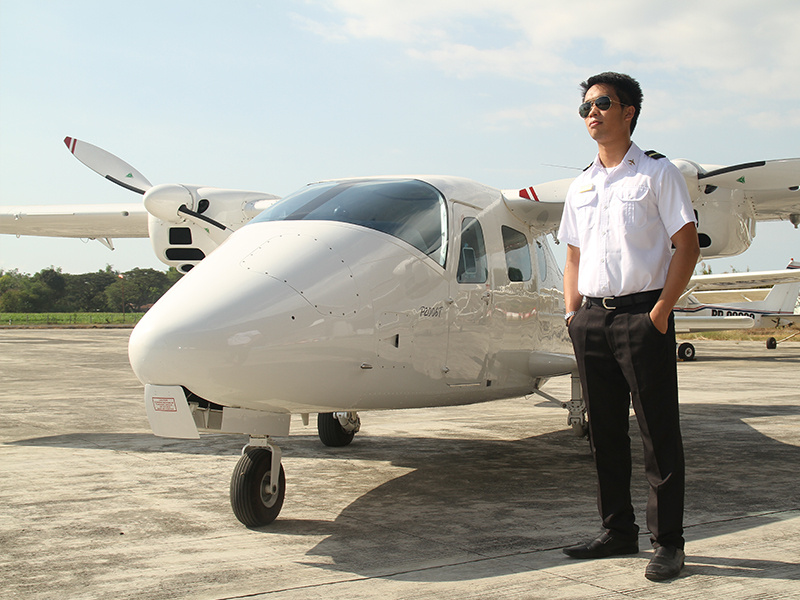


Aircraft manufacturers and airline companies alike are projecting that in the next 20 years, the world will need about 498,000 commercial pilots to meet the increasing demand for travel all over the globe. The Asia Pacific region will have the biggest need for them, as experts are saying that countries will want to hire no less than 192,300 pilots.
In tangible terms, 192,300 commercial airline pilots will be able to fill up the Smart Araneta Coliseum twelve times over. (The Big Dome reportedly has a seating capacity of 16,500).
“It’s a race against time,” said Capt. Benedict Lopena, Dean of the College of Aviation and Head of Training for WCC Aviation Company Pilot Academy, one of the preferred aviation schools not only in the Philippines, but also in Asia.
“Never has the industry felt this much pressure to produce top-caliber pilots. That is why we are doubling our efforts not just to expand and improve our training programs, but also to recruit more Filipino aviation students,” he said.
As such, WCC Pilot Academy has upped the ante in terms of training and quality by building its own private airfield in Binalonan, Pangasinan. It has also invested in internationally-rated simulators, unlike other schools which merely offer desktop-based simulators, which are not really known for safe and quality flight training.
WCC Aviation is indeed going all out in motivating parents and their kids to invest in flight training. They are targeting mostly Filipinos because Capt. Lopena believes that as the demand for pilots continue to surge, airline companies would prioritize getting more Filipinos to lead their flight crew.
“The Philippines take pride in producing some of the best pilots in the world. In fact, local airlines are now having a hard time keeping their Filipino captains and first officers because they have become the prime targets of head hunters for international airline companies,” he said.
But what makes Filipino pilots so special? Capt. Lopena believes it has a lot to do with the country’s colorful history with aviation.
Of all the countries in Asia, the Philippines takes pride in having the longest timeline as far as aviation history is concerned. When other countries in Asia, especially those in Southeast Asia, were still fighting for their independence, the Philippines was already busy laying the groundwork for local commercial aviation.
It started when Laurie Nielson, native of New Zealand, decided to invest in the Philippines in the 1930s and one of his business forays was to build an aviation school and an airport in Manila. He succeeded in convincing other investors to construct the Philippines’ first airport in the then sparsely populated 42-hectare Hacienda San Pedro de Makati owned by the Spanish-Filipino Zobel de Ayala family. In 1937, the Nielson Airport was inaugurated, which was then regarded as the biggest and best-equipped in Asia.
The Nielson Airport became the base of the American Far Eastern School of Aviation – the first aviation school in Asia. The students there supplied the need for pilots for the Philippine Aerial Taxi Company (PATCO), the first airline company in the Philippines, and the Iloilo-Negros Air Express Company, the first Filipino-owned air service. Later on, the school also provided pilots for the Philippine Airlines, which took its maiden flight from the Nielson airfield in Makati to Baguio in March 15, 1941.
Much has happened since then. Mr. Nielson eventually left the country after being incarcerated during the Japanese occupation. The airport he built was closed. The old runway, however, is still filled with activity these days. It’s now known as Ayala Avenue, the busiest road in the Philippines’ premier commercial business district.
Capt. Lopena said the 70-year love affair of Filipinos for flying gave rise to a local tradition for aviation – a rarity in many countries that also offer flight trainings – and this tradition is marked by excellence passed on by one Filipino pilot to another in a very long line of succession.
“Filipinos take flight training seriously. They invest in it long before they actually step in an aviation school. This translates to commitment to the profession – the very thing that gives Filipinos the so-called ‘x-factor’ when being hired by airline companies,” he said.
The attitude of Filipino pilots that makes them so hireable is very much known until today. In a study published in the International Journal of Aviation Psychology, researchers learned that Filipino pilots possess attitudes that easily allow them to adjust to the work styles and personalities of other crew members. “The Filipino culture is collectivist in nature,” the research said. This makes it “easy for them to assimilate the concept of teamwork and communication in the cockpit because they are used to it.”
Capt. Lopena agrees with these findings. He said what also sets Filipino pilots apart is their constant willingness to learn. They understand that a pilot is still a part of a crew; teamwork will ensure nothing less than a safe and smooth flight, which is the ultimate bottom line of any airline company.
The information contained in this website is for general information purposes only.
While WCC Aviation Company endeavors to keep the information up to date and correct, we make no representations or warranties of any kind, express or implied, about the completeness, accuracy, reliability, suitability or availability with respect to information published in this website.
Click here to read the Privacy Statement in full